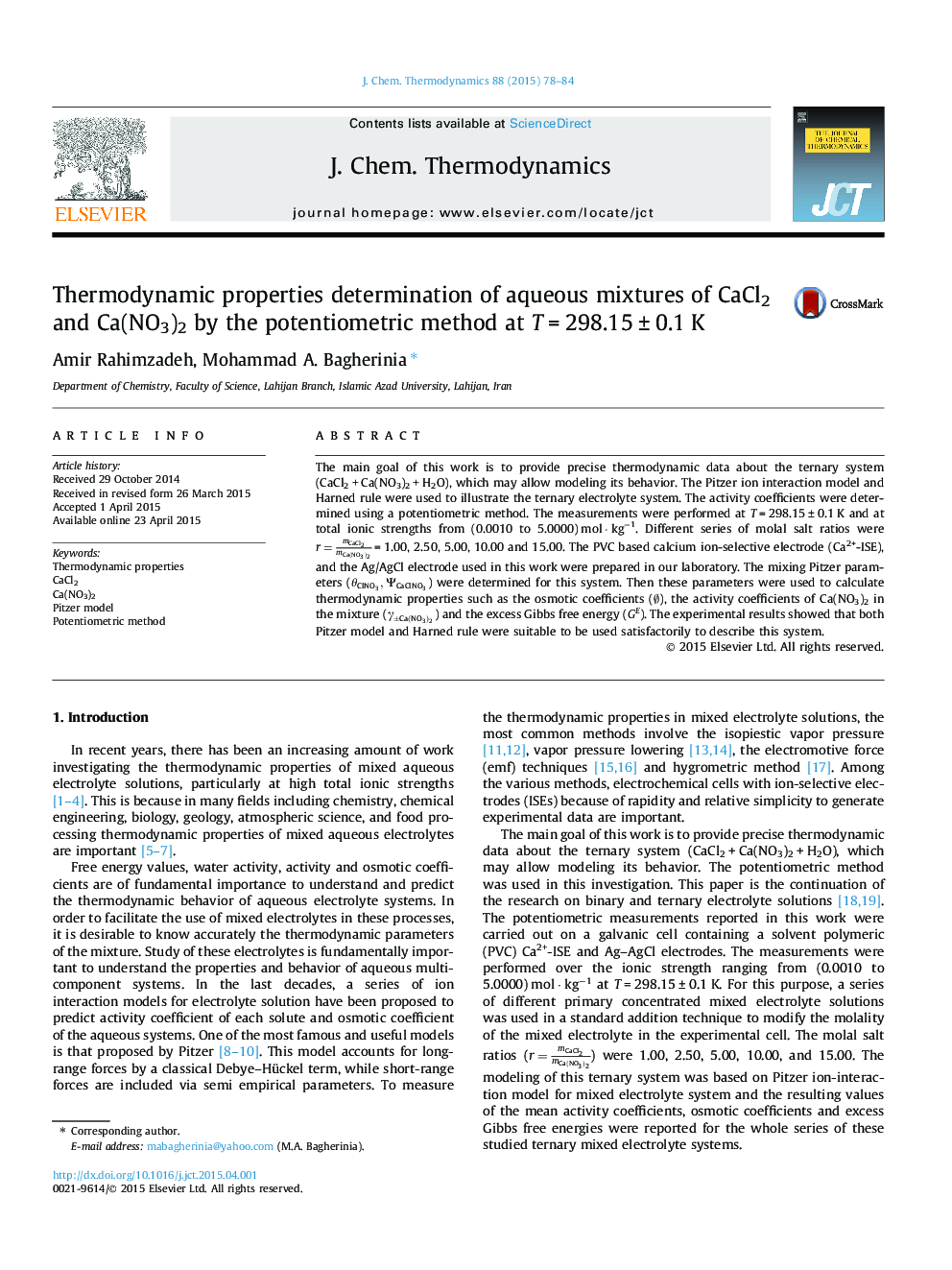| Article ID | Journal | Published Year | Pages | File Type |
|---|---|---|---|---|
| 215173 | The Journal of Chemical Thermodynamics | 2015 | 7 Pages |
•The main goal of this work is to provide precise thermodynamic data for the system.•The mixing Pitzer parameters (SθClNO3,ΨCaClNO3SθClNO3,ΨCaClNO3) were determined for this system.•The parameters were then used to calculate thermodynamic properties.•The Pitzer can satisfactory describe the investigated system.•The Harned rule also was suitable in the case of the mixed electrolyte system.
The main goal of this work is to provide precise thermodynamic data about the ternary system (CaCl2 + Ca(NO3)2 + H2O), which may allow modeling its behavior. The Pitzer ion interaction model and Harned rule were used to illustrate the ternary electrolyte system. The activity coefficients were determined using a potentiometric method. The measurements were performed at T = 298.15 ± 0.1 K and at total ionic strengths from (0.0010 to 5.0000) mol · kg−1. Different series of molal salt ratios were r=mCaCl2mCa(NO3)2 = 1.00, 2.50, 5.00, 10.00 and 15.00. The PVC based calcium ion-selective electrode (Ca2+-ISE), and the Ag/AgCl electrode used in this work were prepared in our laboratory. The mixing Pitzer parameters (θClNO3,ΨCaClNO3θClNO3,ΨCaClNO3) were determined for this system. Then these parameters were used to calculate thermodynamic properties such as the osmotic coefficients (∅∅), the activity coefficients of Ca(NO3)2 in the mixture (γ±Ca(NO3)2γ±Ca(NO3)2) and the excess Gibbs free energy (GE). The experimental results showed that both Pitzer model and Harned rule were suitable to be used satisfactorily to describe this system.
